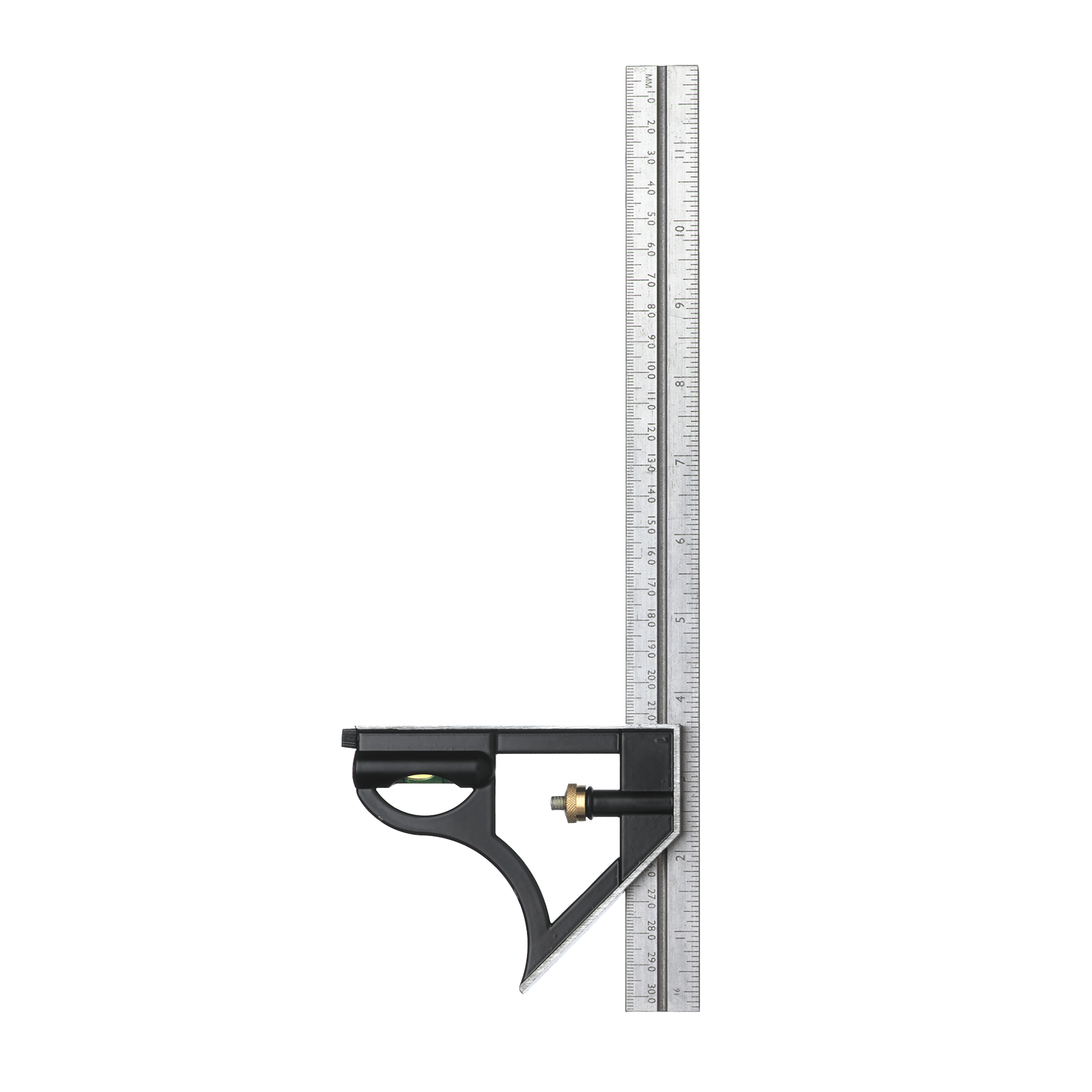Description
THIS PRODUCT: 300mm Stainless Steel Rule, Graduated in Metric and Imperial, Spirit Level and Knurled Brass Lock Nut.
IN GENERAL: A combination square is a versatile measuring and marking tool commonly used in woodworking, metalworking, and various construction and DIY projects. It consists of a ruler or blade with a movable head that can be locked at different angles to perform a range of tasks accurately. Here’s a brief description of a combination square and some common uses:
Description:
- Ruler or Blade: The primary component of a combination square is a straight metal ruler or blade, usually made of stainless steel, that serves as a reference for measurements. The ruler often has both metric and imperial (imperial and/or metric) graduations along its length.
- Movable Head: Attached to one end of the ruler is a movable head or stock, which can slide along the length of the ruler and be locked in place at various positions. The head typically has a level vial for ensuring horizontal or vertical alignment.
- Square and 45-Degree Angle: The movable head can be rotated and locked at 90-degree (square) and 45-degree angles to the ruler, allowing for precise measurements, marking, and layout at right angles and diagonal angles.
- Depth and Height Gauge: Some combination squares have an integrated depth gauge or height gauge feature on the ruler, which enables users to measure the depth of holes or the height of surfaces accurately.
- Scriber: Many combination squares come with a removable or retractable scriber or scribing point on the head, used for marking lines or indentations on materials.
Common Uses:
- Measuring and Marking: Combination squares are used for measuring and marking straight lines, perpendicular lines, and angled lines on various materials, including wood, metal, and plastic.
- Layout and Marking 90-Degree Angles: Woodworkers and metalworkers rely on combination squares to mark 90-degree (square) angles for accurate cuts, joinery, and layout in projects such as cabinetry and framing.
- Checking Squareness: Combination squares are invaluable for checking the squareness of corners, edges, and assemblies, ensuring that they are perfectly perpendicular.
- Marking 45-Degree Angles: By locking the head at a 45-degree angle, users can easily mark and cut precise 45-degree angles for miter joints, bevels, and other angled cuts.
- Depth and Height Measurement: The depth and height gauge feature of combination squares makes them suitable for measuring the depth of holes, the height of protruding objects, and other dimensional checks.
- Scribing Lines: The scribing point or scriber on the combination square is used to create precise, sharp lines on materials, making it a valuable tool for layout and marking tasks.
- Machine Setup: In metalworking and machining, combination squares are employed to set up machine tools, measure and align workpieces, and ensure accurate machining operations.
- Carpentry and Framing: Carpenters use combination squares for framing, layout, and marking tasks in house construction, ensuring that walls, roofs, and floors are square and properly aligned.
- DIY and Home Improvement: Combination squares are essential tools for DIY enthusiasts and homeowners working on various projects, from building shelves to installing fixtures and making repairs.
- Quality Control: In manufacturing and quality control, combination squares are used to verify the accuracy and precision of machined or fabricated components.
Combination squares are versatile and indispensable tools for professionals and hobbyists alike, offering precision and flexibility in a wide range of measuring, marking, and layout tasks. They are valued for their ability to ensure squareness, angles, and measurements with ease and accuracy.


